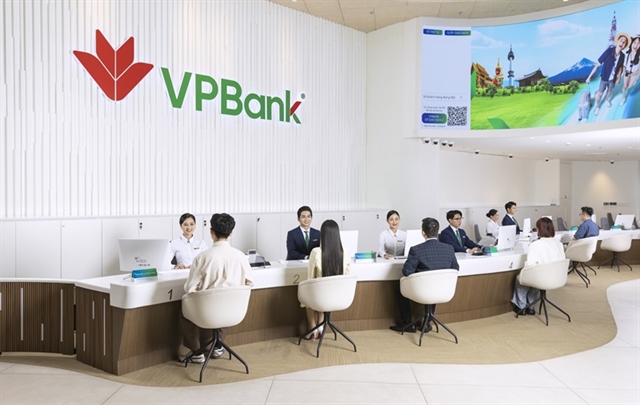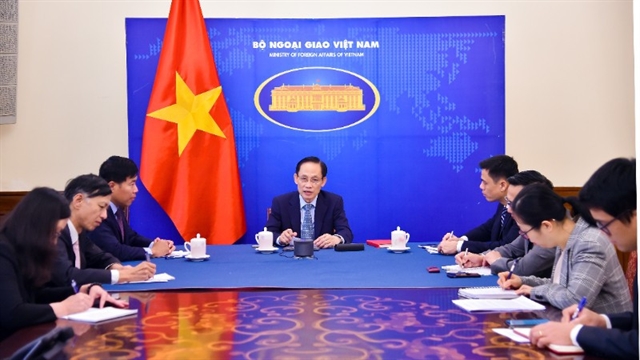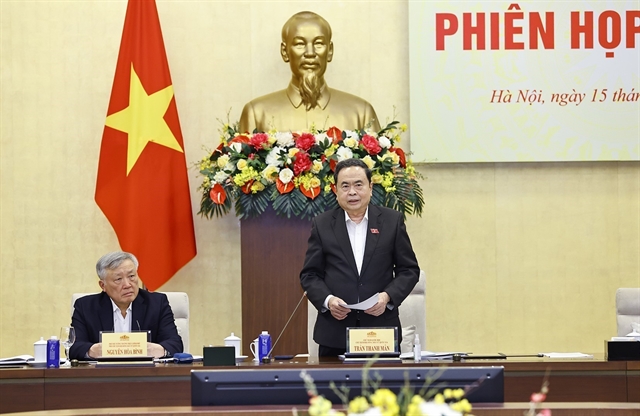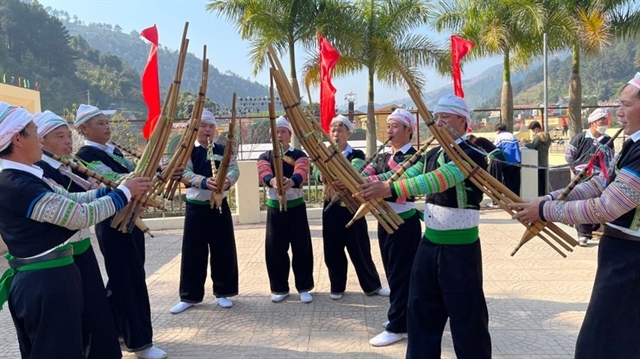 Economy
Economy

 |
| The site for the Ninh Thuận 1 nuclear power plant in Phước Dinh Commune, Khánh Hòa Province. — VNA/VNS Photos |
KHÁNH HÒA — Khánh Hòa Province is racing against the clock to prepare infrastructure and clear land for the Ninh Thuận nuclear power project, a venture that promises to reshape the country’s energy landscape and bolster national energy security.
Việt Nam's first proper venture into the nuclear energy field, comprising two nuclear plants – Ninh Thuận 1 and 2 – has now cleared key legal and policy hurdles, from the National Assembly’s Resolution 174/2024/QH15 to Resolution 189/2025/QH15, which set special mechanisms for the project’s investment.
A strategic turning point
Since the beginning of this year, following the Government’s assignment for land clearance, Khánh Hòa has undertaken a series of urgent measures to ensure the land for the two nuclear plants is ready by December 31.
On April 1, Prime Minister Phạm Minh Chính officially assigned the Vietnam Electricity Group (EVN) and the Vietnam National Oil and Gas Group (Petrovietnam) as investors, while delegating the province to manage resettlement and land clearance. The province has since coordinated closely with the investors, reviewing and adjusting prior preparations to stay on schedule.
Khánh Hòa has established a provincial steering committee and specialised teams to survey land, population, and infrastructure in the project areas. Adopting the principle of 'clear tasks – clear milestones – clear responsibilities', authorities have made progress transparent and addressed obstacles promptly, a key factor in ensuring timely handover.
The total land to be recovered for Ninh Thuận 1 and 2 exceeds 1,130 hectares, affecting 1,153 households with 5,229 residents. The estimated cost for land clearance, relocation, resettlement, and livelihood stabilisation stands at VNĐ12,392 billion (over US$469 million), of which the central government has allocated VNĐ3,236 billion ($122.5 million) so far.
The Ninh Thuận 1 nuclear power plant will be built in Phước Dinh Commune on 485.54 hectares, while Ninh Thuận 2 in Vĩnh Hải Commune will occupy 643.6 hectares.
Vice-chairwoman of Vĩnh Hải Commune Đào Thị Loan said that land clearance was a complex task, affecting hundreds of households, various types of land and even sections of Núi Chúa National Park.
She added that the commune was working closely with residents to address concerns promptly and prevent any information gaps.
Since May, task forces from the Government and inter-ministerial teams, including the Ministries of Finance, Industry and Trade, and Science and Technology, have worked with Khánh Hòa Province to resolve issues around funding, resettlement policies, clean land handover and technical preparation.
The province has committed to issuing detailed land price approvals by October and completing verification and public notices in both communes by the fourth quarter. Resettlement areas will be fully equipped with schools, health stations, and cultural facilities, ensuring residents enjoy improved living conditions.
Hồ Xuân Ninh, Director of the Khánh Hòa Department of Industry and Trade, said that land clearance still faced obstacles due to legal issues, as nuclear safety distance regulations had not yet been standardised.
Limited manpower at the commune level slowed the processing of documents, especially following administrative unit reorganisation, and central government funding remained insufficient.
The province had proposed adjustments to accelerate procedures and ensure sufficient legal and financial support.
Deputy Minister of Finance Nguyễn Đức Tâm recently urged that land clearance be measured by the day, with no delays, highlighting the project’s urgency.
National Assembly officials also pledged continued support, facilitating special mechanisms for land, finance, and resettlement to ensure smooth implementation.
Provincial People's Committee Vice-Chairman Trịnh Minh Hoàng confirmed that the province would mobilise maximum resources to hand over clean land to investors by December 30.
 |
| Land clearance underway in Vĩnh Trường Hamlet, Phước Dinh Commune, the site of the Ninh Thuận 1 nuclear power plant. |
A long-held vision
Nuclear power in Việt Nam began with the 250 kW TRIGA Mark II research reactor in Đà Lạt in 1963, laying the foundation for domestic nuclear training and research.
After a wartime pause, the reactor was restored in 1984 with Soviet support, doubling its capacity to 500kW and training hundreds of engineers and researchers.
In 2009, the National Assembly approved investment in the Ninh Thuận nuclear power project, planning two plants with a combined capacity exceeding 4,000MW.
Economic and financial shifts led to a temporary suspension in 2016, but the country continued nuclear research and maintained a skilled workforce, preserving decades of expertise.
Associate Professor Dr Nguyễn Nhị Điền, President of the Vietnam Atomic Energy Society, said that even during the hiatus, operations at the Đà Lạt reactor provided an experimental environment critical for long-term commercial readiness.
By the end of 2024, the National Assembly officially restarted the nuclear programme with Resolution 174/2024/QH15.
The Government’s subsequent Resolution 70/NQ-CP outlined clear steps for preparation, emphasising mastery of nuclear technology, absolute safety, workforce development and international technology transfer.
Nuclear energy is a vital source of baseload electricity – stable, low-emission power that ensures grid stability and meets essential energy needs around the clock.
Dr Điền said that nuclear power would produce large, consistent output, making it indispensable for households, industry and critical infrastructure.
The National Power Development Plan VIII recognises nuclear power as a strategic resource for long-term stable operations and a key contributor to achieving net-zero emissions by 2050.
People as the key to success
Human resources are the decisive factor for the programme’s success.
Since 1984, the Đà Lạt Nuclear Research Institute has provided a training ground for nuclear specialists.
From fuel conversion breakthroughs to pioneering international collaborations, Việt Nam has maintained a strong base of technical expertise.
Under Decision 1012/QĐ-TTg, a training programme has been mapped out through 2035 to prepare about 3,900 personnel for the two nuclear power plants. It covers basic, university, and postgraduate levels, with trainees to gain practical experience at the Đà Lạt reactor and at partner facilities abroad, leading to certification in nuclear operation.
Collaboration with EVN, Petrovietnam, universities, and organisations such as the IAEA ensures up-to-date exposure to Generation III+ technologies and small modular reactors (SMRs).
Dr Điền said that developing nuclear experts would typically take 10–20 years in an experimental environment.
Việt Nam would need a disciplined, self-reliant workforce capable of engaging in every stage, from design and construction to operation and management, so they could work effectively with international partners and quickly take command of the technology, he said.
As the nuclear power plant projects in Phước Dinh and Vĩnh Hải move into construction, they would mark more than the addition of two power plants. They would represent a strategic shift in Việt Nam’s energy landscape, strengthening baseload capacity, reducing emissions and advancing national technological capability for decades to come, said Dr Điền. — VNS




